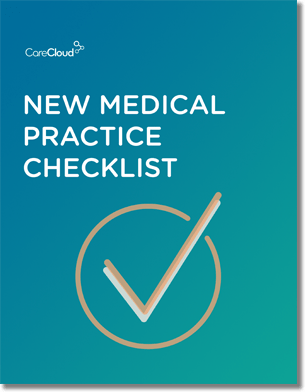Despite the arguments of paper purists, switching over to an EHR is not only more efficient for your practice, but it assuages age-old conflicts associated with ill-famed physician penmanship.
Even the federal government agrees the quill-and-scroll age is nearly over. With the 2015 EHR conversion deadline looming, practices need to keep Meaningful Use compliance and its reward monies in mind, so choosing the right EHR has become a time-sensitive manner.
So, the question isn’t whether your practice should adopt an EHR, but what kind of features your practice is most comfortable with. EHR note-taking mechanisms are among the most important of these, considering the magnetic connection between physicians and their pen-and-pad combos.
FORMS VS NARRATIVES
EHR note taking can essentially be divided into two categories. The first, or form-based notes, means the EHR pre-fabricates categories for the user to work from, based on a patient’s condition, organized by symptoms and/or body parts.
The user can select any number of related symptoms from a drop-down menu or similar function. This allows physicians to save time and minimize their time in the system while offering patients their full attention.
However, while the form-based system is quick and user-friendly, it’s rather restrictive. Some doctors prefer elaborating on symptoms, and with good reason.
For instance, viral meningitis and influenza share a number of symptoms and are occasionally mixed up near their onset. And while body aches are common to both viruses, meningitis only stands out when patients specifically complain about stiff necks – a symptom not encountered in patients with the flu.
The narrative-based EHR note is the way to go in cases like these. Efficient EHRs stress the granularity of information, which ensures precision when logging patient notes and provides the flexibility of freeform note taking.
Many doctors are not only accustomed to the freedom of non-ruled paper pads, but they enjoy being able to elaborate. So much so, in fact, that a number of famous physicians have traded their scalpels for pens permanently (see: Robin Cook, Conan Doyle, and Chekhov).
WHAT KIND IS BETTER FOR YOUR PRACTICE?
As a healthcare provider, there are questions you can ask to determine what kind of note taking mechanism would be best for your practice. These include:
- Does our practice specialty require more specific notes than, say, general medicine?
- Do our patients often suffer from common symptoms that could be attributed to other conditions or diagnoses?
- Does my practice treat patients with terminal illnesses, where a patient’s feelings about symptoms are important to jot down?
- Does my practice treat unorthodox conditions whose symptoms cannot be pigeonholed into a template?
- Is patient psychology information to the conditions we treat?
If you answered yes to most of these questions, a narrative-based EHR would be advisable. Still, this approach is often inefficient, namely because of it’s tendency to disconnect doctors during patient consultations.
Dragon and other audio dictation solutions speed up the process, but reciting symptoms into a machine in front of patient is both distracting and annoying. This is a more delicate topic for patients with terminal illnesses, who could be psychologically harmed from having their symptoms repeated in their presence.
A HAPPY MARRIAGE
Most EHRs on the market stick to form or narrative, but why not marry both? Much like Rosetta Stone software teaches language by mimicking a priori human behaviors, EHR note-taking capabilities should do the same.
The most logical solution would marry the note-taking styles, creating a hybrid of both form and narrative-based solutions. A physician can choose from diagnoses and symptoms from one column, select a broad description of said symptoms, and enter personalized descriptions based on what the patient is reporting.
This not only creates the most comprehensive electronic notes possible in a minimal period of time but also reduces error and relieves eyestrain associated with deciphering infamous physician handwriting.
What kind of approach benefits your practice the most?

Do you know what you need when setting up a new medical practice?



